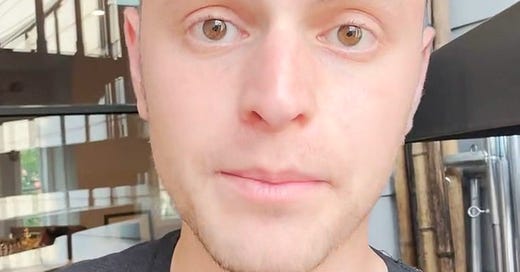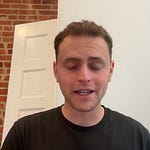Today, I had the privilege of doing something that fills me with hope: speaking to the next generation of journalists.
This afternoon, I joined a panel at the Al Neuharth Free Spirit and Journalism Conference, where I spoke to 50 high school students from across the country—all of them bright, passionate, and ready to shape the future of journalism. I talked to them about how I built my career, how I found my voice, and how I’ve been able to make this work sustainable outside of traditional media.
And right away, I want to say: if you believe in accessible, independent journalism—if you value having truthful, people-powered reporting that lives outside of paywalls—I hope you’ll consider becoming a paid subscriber.
I keep all of my work free because I believe democracy dies behind a paywall. I want anyone, regardless of income or background, to have access to trustworthy information. But the only way I can keep doing that is with the direct support of readers like you. Your subscription doesn’t just fund this work—it makes it possible for young people to see that there’s a path forward in journalism that doesn’t require gatekeeping or approval from the old guard.
The panel I joined today was stacked. I sat alongside the managing editor of Punchbowl News, a reporter from Puck, and a journalist from The Verge. These are professionals with long careers, deep sources, and stories that stretch across beats and bylines. To be seated with them was, frankly, a little intimidating. But it was also an enormous honor—and a powerful reminder that there are many different ways to show up in this profession.
Our discussion ranged from the current state of journalism to what it means to report ethically in an age of information overload. But the question students kept circling back to was one I remember asking myself not so long ago: How do you make a career out of this?
That’s when I told them about Substack. About how I write directly to readers. About how I don’t charge anyone to access my reporting. And again—yes, I told them about you. This community. People who support this work not because they’re forced to, but because they believe in it.
It was clear that many of them had never heard that model before. They were surprised when I said everything I publish is free—no paywalls, no premium tiers. I explained that I believe journalism should serve the public good, not a profit margin. That making it sustainable takes a different kind of relationship between writer and reader. One built on trust.
We also spent a good chunk of time talking about how the internet—especially social media—has dismantled the old gatekeeping systems that once kept journalism out of reach for so many. I told them what I wish someone had told me at 17: you do not have to wait your turn. You don’t need a degree from an elite school or a connection inside a legacy newsroom to get started.
All you need is a phone, an app, and a commitment to the truth.
With those tools, you can publish your own stories, cover your own community, and reach an audience that legacy institutions might overlook. That doesn’t mean it’s easy. But it is possible—and more possible now than ever before.
And these students? They got it. Their questions were sharp. Their insights were bold. They didn’t just want careers—they wanted to do work that matters. They understood the stakes: declining trust in media, widespread misinformation, and growing inequality in who gets to tell the story.
One question really stuck with me. A student asked, “What keeps you going when it feels like the industry is falling apart?” And my answer was simple: The work still matters. The truth still matters. And people still need journalists—especially young, brave ones—who are willing to step into that gap.
I left the room today feeling encouraged. Not just because these 50 students were smart and thoughtful—but because they were hungry. Hungry to listen, to learn, and to build something better than what they’ve inherited.
And while I’m no longer in high school, I see so much of myself in them. I remember that spark. I remember the questions. And I’m more committed than ever to paying forward the guidance, tools, and encouragement that helped me find my own way.
Today was a good day. And if you’ve read this far—if you’ve ever wondered whether journalism has a future—the answer is yes. It’s in the hands of these young people. And with your support, I’ll keep doing everything I can to help them shape it.












Share this post